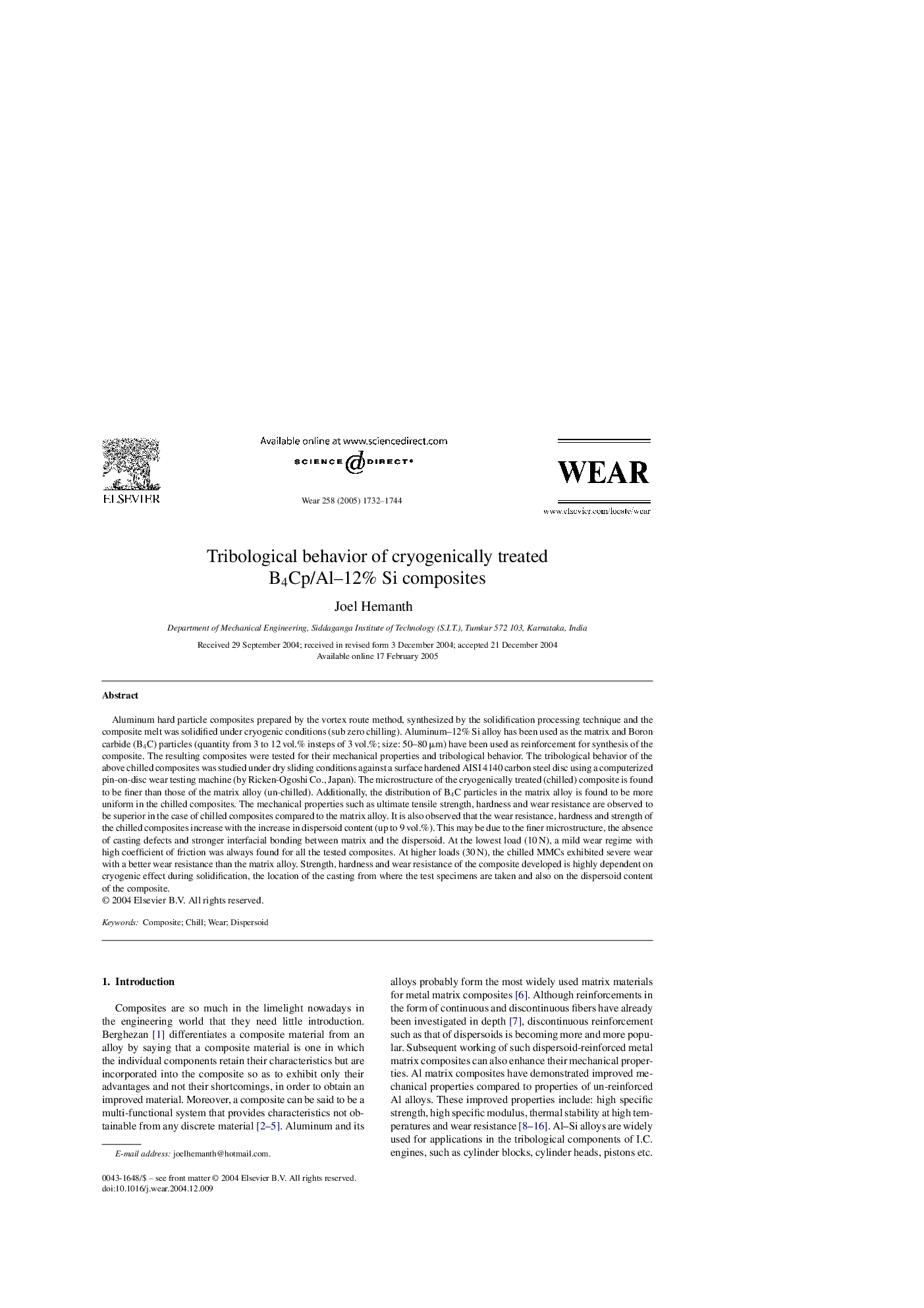| کد مقاله | کد نشریه | سال انتشار | مقاله انگلیسی | نسخه تمام متن |
|---|---|---|---|---|
| 9679497 | 1455082 | 2005 | 13 صفحه PDF | دانلود رایگان |
عنوان انگلیسی مقاله ISI
Tribological behavior of cryogenically treated B4Cp/Al-12% Si composites
دانلود مقاله + سفارش ترجمه
دانلود مقاله ISI انگلیسی
رایگان برای ایرانیان
موضوعات مرتبط
مهندسی و علوم پایه
مهندسی شیمی
شیمی کلوئیدی و سطحی
پیش نمایش صفحه اول مقاله

چکیده انگلیسی
Aluminum hard particle composites prepared by the vortex route method, synthesized by the solidification processing technique and the composite melt was solidified under cryogenic conditions (sub zero chilling). Aluminum-12% Si alloy has been used as the matrix and Boron carbide (B4C) particles (quantity from 3 to 12 vol.% insteps of 3 vol.%; size: 50-80 μm) have been used as reinforcement for synthesis of the composite. The resulting composites were tested for their mechanical properties and tribological behavior. The tribological behavior of the above chilled composites was studied under dry sliding conditions against a surface hardened AISI 4140 carbon steel disc using a computerized pin-on-disc wear testing machine (by Ricken-Ogoshi Co., Japan). The microstructure of the cryogenically treated (chilled) composite is found to be finer than those of the matrix alloy (un-chilled). Additionally, the distribution of B4C particles in the matrix alloy is found to be more uniform in the chilled composites. The mechanical properties such as ultimate tensile strength, hardness and wear resistance are observed to be superior in the case of chilled composites compared to the matrix alloy. It is also observed that the wear resistance, hardness and strength of the chilled composites increase with the increase in dispersoid content (up to 9 vol.%). This may be due to the finer microstructure, the absence of casting defects and stronger interfacial bonding between matrix and the dispersoid. At the lowest load (10 N), a mild wear regime with high coefficient of friction was always found for all the tested composites. At higher loads (30 N), the chilled MMCs exhibited severe wear with a better wear resistance than the matrix alloy. Strength, hardness and wear resistance of the composite developed is highly dependent on cryogenic effect during solidification, the location of the casting from where the test specimens are taken and also on the dispersoid content of the composite.
ناشر
Database: Elsevier - ScienceDirect (ساینس دایرکت)
Journal: Wear - Volume 258, Issues 11â12, June 2005, Pages 1732-1744
Journal: Wear - Volume 258, Issues 11â12, June 2005, Pages 1732-1744
نویسندگان
Joel Hemanth,